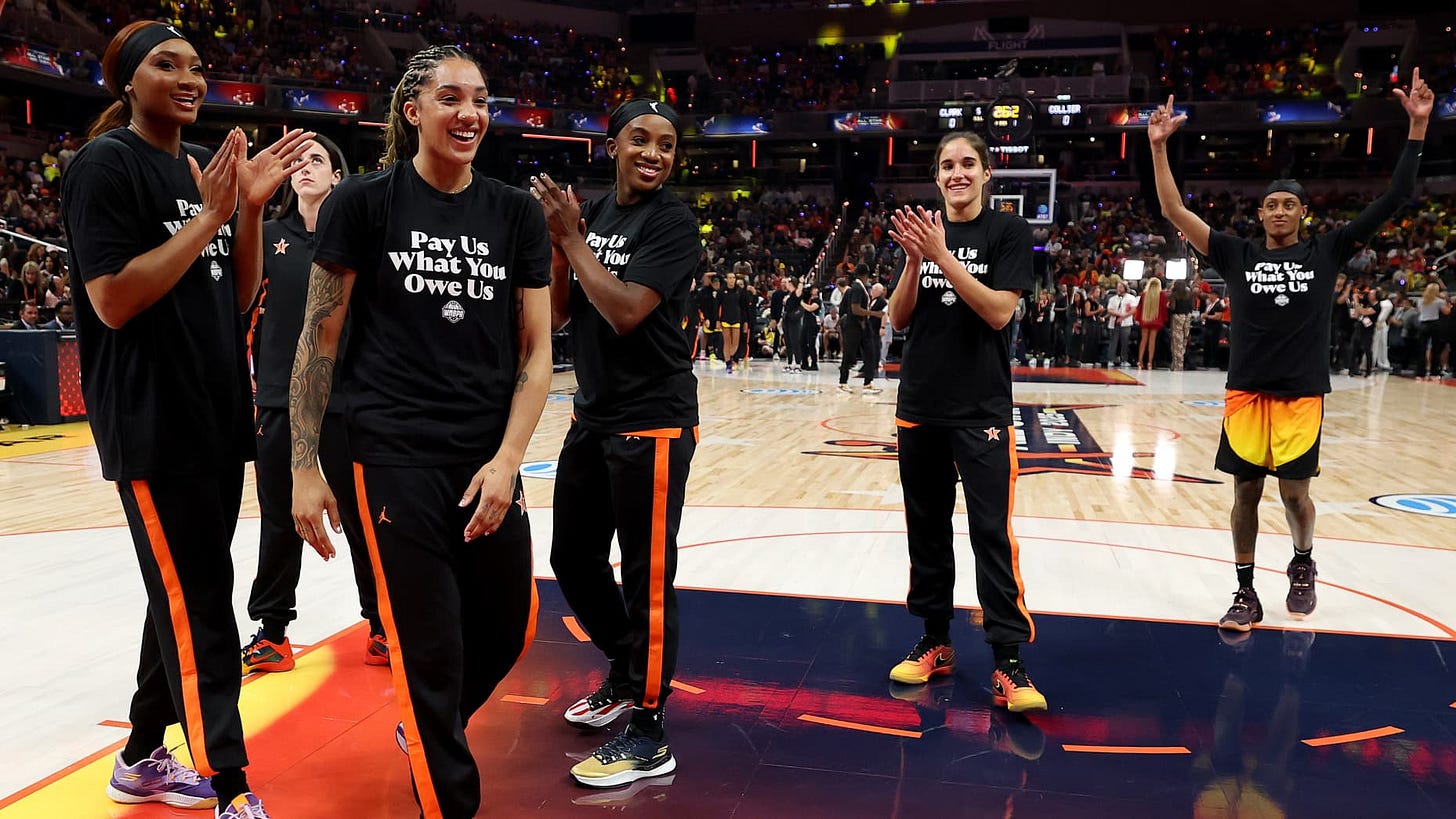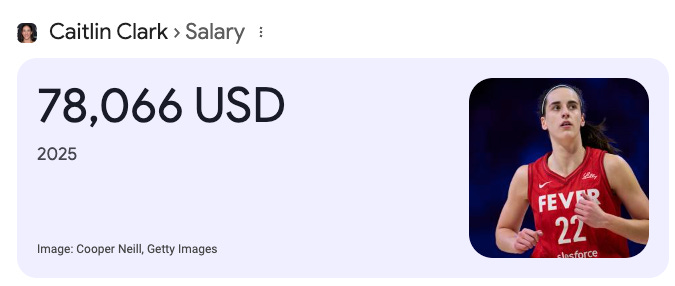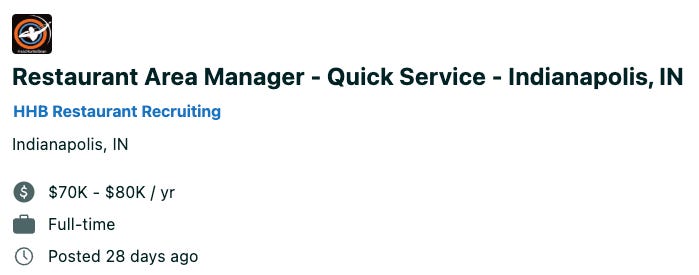Mistreating WNBA Players Undercuts A Key Argument for Capitalism
No wonder 62% of young Americans prefer socialism.
The most interesting part of the WNBA’s 2025 All-Star Game came before tip-off. During a players’ only meeting the morning of the game, this season’s top athletes decided to make a statement. Both rosters warmed up wearing shirts reading ‘Pay Us What You Owe Us’ — a polite statement considering the egregious state of WNBA player pay.

The Women’s National Basketball Association is booming. The 2024 season broke every record in the league’s twenty-eight-year history. Compared to the year prior, television viewership increased by 170% (averaging 1.2 million viewers), while in-person attendance skyrocketed, with 242% more sold-out games. Meanwhile, merchandise sales—the cash cow of every major sports league—increased sixfold. Even trivial metrics reflected the surge in public interest. The WNBA’s social media following quadrupled, there was a 538% increase in All-Star voting, and downloads of the WNBA App went up by 252%.1 For team owners, it’s never been better. League revenue is reported to be $200 million, and individual teams are a highly coveted investment. In 2019, the Wu Tsai family bout the New York Liberty for $10 million. It’s now worth over $420 million. Even more impressive is the return on investment for Las Vegas Raiders owner Mark Davis, who bought the Vegas-located Aces for $2 million in 2021. Current evaluations put the Aces at $290 million, making it the largest money-printing machine outside of the Federal Reserve.2
With WNBA owners making Scrooge McDuck-level money, more capitalists want it. The league has announced expansion teams in Toronto, Portland, Cleveland, Detroit, and Philadelphia.3 When the newest expansion team, the Golden State Valkyries, began play in 2023, their ownership was charged a $50 million expansion fee. That fee has now risen fivefold to $250 million, a sign of not only the league’s expectation of rapid growth, but of capital’s willingness to pay to get in on the ground floor.4 And it’s no surprise why. Last year, the WNBA signed a $2.2 billion broadcasting deal with Disney, Amazon Prime Video, and NBCUniversal. Interestingly, the deal includes a renegotiation clause in three years, giving the league the flexibility to increase compensation if its current popularity explosion continues.5 And, as is the case with all professional sports, the direct revenue is only the tip of the iceberg. The WNBA’s success has generated unquantifiable profits for secondary industries, such as sports books, hotels, restaurants, bars, and, of course, the NCAA, which is experiencing its own viewership boom in part thanks to the WNBA’s generation of increased attention on women’s athletics.6
Now, this might shock you, but the owners are not sharing the revenue with the players. What? Capitalism exploits labor to create value, then suppresses their wages to maximize profit? Unheard of! Jokes aside, the state of payer play is far worse than most imagine. Caitlin Clark, the global superstar who is worth billions, would make more money working as a restaurant manager outside the Indian Fever’s Gainbridge Fieldhouse than she does playing inside it.


Keep reading with a 7-day free trial
Subscribe to JoeWrote to keep reading this post and get 7 days of free access to the full post archives.


